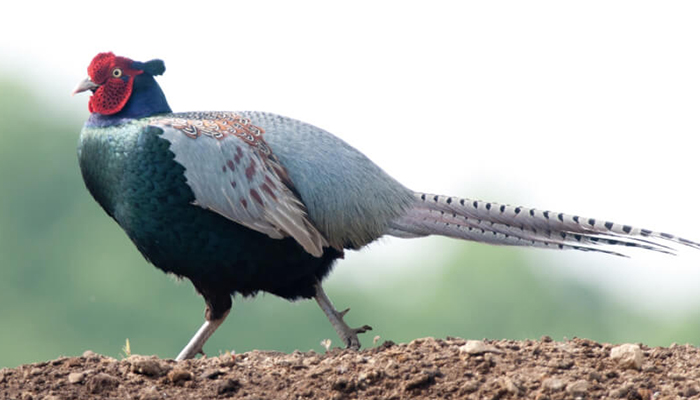
English: Common
Pheasant, Red-necked Pheasant
Russian: Фазан
German: Fasan
French: Faisen
de Colchide
Mongolian: Зэрлэг гургуул, Гургуул
Japanese: キジ (Kiji)
Status: Rare species. According to the IUCN Red List categories and criteria,
the species evaluated as-Near Threatened.Distribution and Range: Resident species in high mountains of the Russian Federation,
Iran, Afganistan, China, Korea, and Indo-China. In Mongolia: Great Khyangany
range, Buir Lake, Guu, Azarga, Khalkh, Shine, Emnegt, Huiten, Avdrant, Khovd
River riparian forests and Zerghyin Valley, and Achit Lakes shores with reed thickets.
Habitat: Sandy soils with scrubs, bushes, aspens, birches, and other mixed
threes, in high bushy thickets.
Population and threats: Threats: livestock overgrazing in the areas of the species
habitat in the spring, beginning of the summer, end of fall, destroys the
habitat; local residents living near the Bokhmoron, Khovd, Khalkh, and Nomrog
Rivers basins cut down excessive amount of bushes and shrubs for fuel degrading
the species habitat. Additional threats: spring and fall forest fires,
poaching, sudden drops in temperatures, cold spells, excessive snow coverage
and snow storms, preyed upon by wolves, red foxes, dogs.
Conservation and measures: Hunting prohibited since 1975. Included as Rare animal in the
Annex to the Mongolian Government Resolution #7 (2012), included in the
Mongolian Red Book (1987, 1997). In 1976 and 1977, about 10 pheasants were
captured from riparian forest of the Khovd River, and attempted to breed them
in captivity at an experimental breeding center near Ulaanbaatar. The habitat
is partially included within the NSPANS.
Further actions: Employ cooperative conservation methods of natural resource
management at certain breeding and summering habitats for the species, involve
the local residents, raise awareness, provide food supply during dzud, restore
population abundance by establishing experimental breeding centers in the
Khovd, Nomrog Rivers valleys, raise awareness.